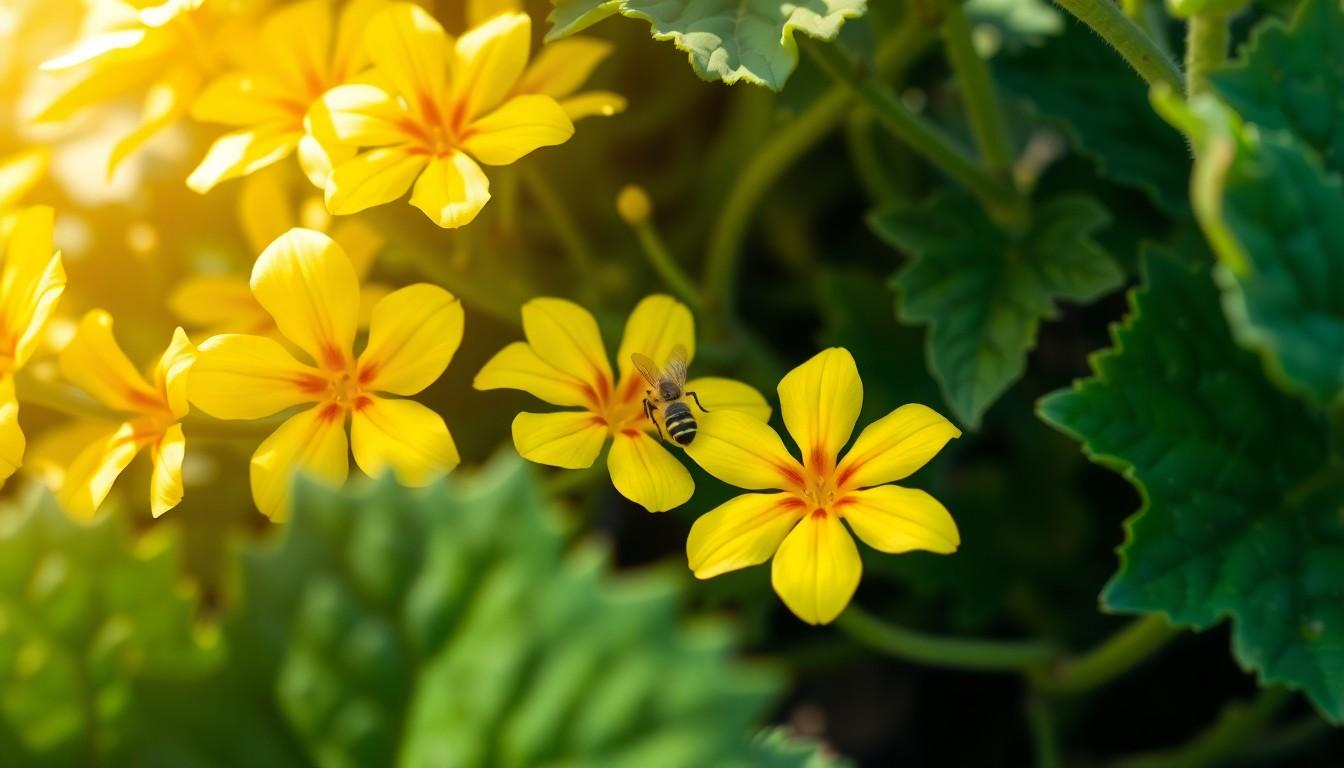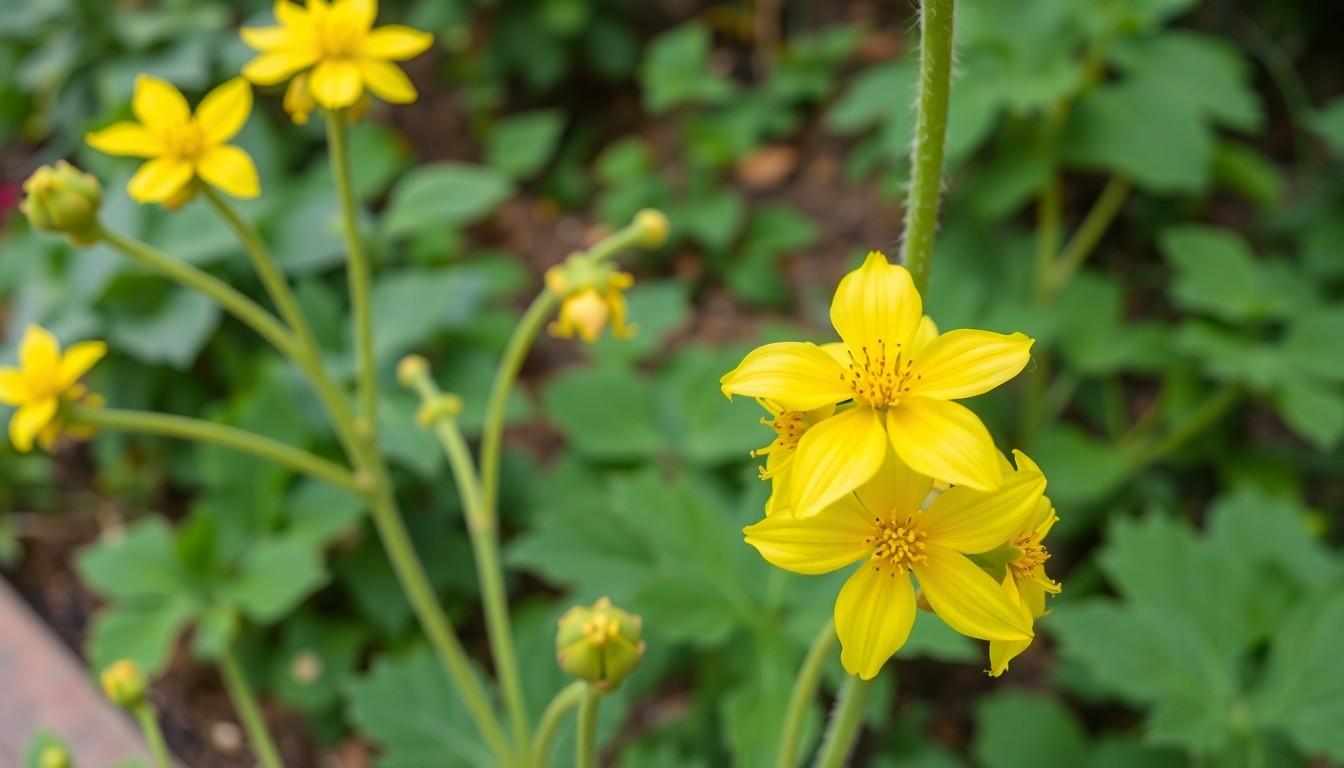Physical Address
304 North Cardinal St.
Dorchester Center, MA 02124

Watermelon plant flowers might not be the stars of the garden, but they sure know how to steal the show. These bright yellow blooms are nature’s way of saying, “Hey, look at me! I’m about to produce the juiciest, sweetest fruit you’ll ever taste.” If you’ve ever wondered what goes on behind the scenes before that perfect slice of watermelon graces your picnic table, you’re in for a treat.
Watermelon plant flowers showcase bright yellow petals that attract various pollinators. These flowers are essential for fruit production, containing both male and female reproductive parts. Male flowers develop first and often cluster together, while female flowers appear later, located at the base of the plant.
Pollinators like bees and butterflies play a vital role in transferring pollen from male to female flowers. This transfer is crucial, as fertilization leads to the development of fruit. Each flower blooms for a single day, making timely pollination essential for successful harvests.
Environmental conditions affect blooming patterns. Warmer temperatures and adequate moisture promote flowering and increase fruit yield. Caution should be exercised, as excessive heat or drought can hinder flower development and reduce pollination rates.
Plants typically produce a mixture of male and female flowers. Both types of flowers are necessary for optimal fruit development. The life cycle of watermelon flowers emphasizes the interconnectedness of pollination and fruit production.
After successful fertilization, the female flowers develop into watermelons. Fruits grow in size and mature over several weeks, signaling the approach of harvest time. Recognizing the importance of watermelon plant flowers enhances appreciation for the overall growth process.

Watermelon plant flowers display key characteristics crucial for the overall fruit production process.
Each watermelon flower contains distinct reproductive structures. Male flowers develop first, forming clusters that allow for effective pollen dispersal. These male flowers grow on long stems, featuring five yellow petals that give them a star-like appearance. Female flowers, located closer to the base of the plant, are identifiable by their swollen ovaries. This swelling indicates the potential for fruit development. A typical watermelon flower blooms for one day, emphasizing the necessity for timely pollination. Pollinators play a vital role in transferring pollen from male to female flowers, enabling fertilization and subsequent fruit growth.
Watermelon flowers primarily exhibit a bright yellow color, easily recognizable in the garden. This vibrant hue serves as a beacon for pollinators, attracting bees and butterflies. Some flowers may display slight variations in color intensity, primarily due to environmental factors or specific plant cultivars. These variations could include deeper shades of yellow or hints of orange. While yellow dominates, the flowers’ color ultimately signals their readiness for pollination, which is critical for fertilization and fruit development. The consistent appearance and color are essential for maintaining plant health and maximizing yields.
The pollination process is vital for watermelon plants, relying heavily on both natural pollinators and pollen transfer methods to achieve successful fruit development.
Pollinators like bees and butterflies play a crucial role in the watermelon blooming process. These insects move from male to female flowers, transferring pollen essential for fertilization. Active pollinators can increase fruit set and enhance the overall yield. Their activity peaks during warm, sunny days when flowers are open. Gardens with diverse flowering plants often attract more pollinators, leading to improved pollination rates. Failure to attract sufficient pollinators can result in lower fruit production, emphasizing the need for healthy ecosystems.
Self-pollination occurs when pollen from a male flower fertilizes a female flower on the same plant. This method can lead to some fruit production but typically results in lower genetic diversity. Cross-pollination, on the other hand, involves fertilization between male and female flowers from different plants. Increased genetic variation from cross-pollination generally promotes stronger plants and better yields. Both self-pollination and cross-pollination occur in watermelon flowers, but the latter often proves more effective for optimal growth and fruit quality. Understanding these processes helps in the management of watermelon crops for maximum harvest efficiency.
Watermelon plants thrive under specific conditions. These factors directly affect flowering and fruiting potential.
Optimal temperatures between 70°F and 90°F support vigorous growth. Full sun exposure maximizes photosynthesis and encourages abundant blooms. Soil rich in organic matter retains moisture while ensuring good drainage. A pH level of 6.0 to 6.8 supports nutrient absorption effectively. Watering during dry spells prevents stress, promoting strong blooms. Typical growing seasons last around 70 to 90 days, allowing adequate time for fruit maturation. Frequent checks for adequate sunlight and moisture ensure healthy flowering cycles.
Common pests, such as aphids and cucumber beetles, threaten flower development and overall health. Disease pressures from powdery mildew or root rot can hinder plant performance. Extreme temperatures, both hot and cold, disrupt flowering, affecting crop viability. Insufficient pollination often results in reduced fruit set, impacting yields negatively. Additionally, nutrient deficiencies lead to stunted growth, which delays flowering. Awareness of these challenges enables more effective management of watermelon crops. Addressing these issues promptly helps maintain robust plants and improves overall production.
Watermelon plant flowers play an essential role in the journey from bloom to fruit. Their vibrant yellow petals not only add beauty to gardens but also signal the promise of a bountiful harvest. Understanding the dynamics of male and female flowers and the critical role of pollinators can enhance cultivation efforts. By ensuring optimal growing conditions and addressing common challenges, gardeners can support healthy flowering and, ultimately, a successful watermelon yield. Embracing these insights will lead to thriving plants and delicious fruits, making the effort worthwhile.